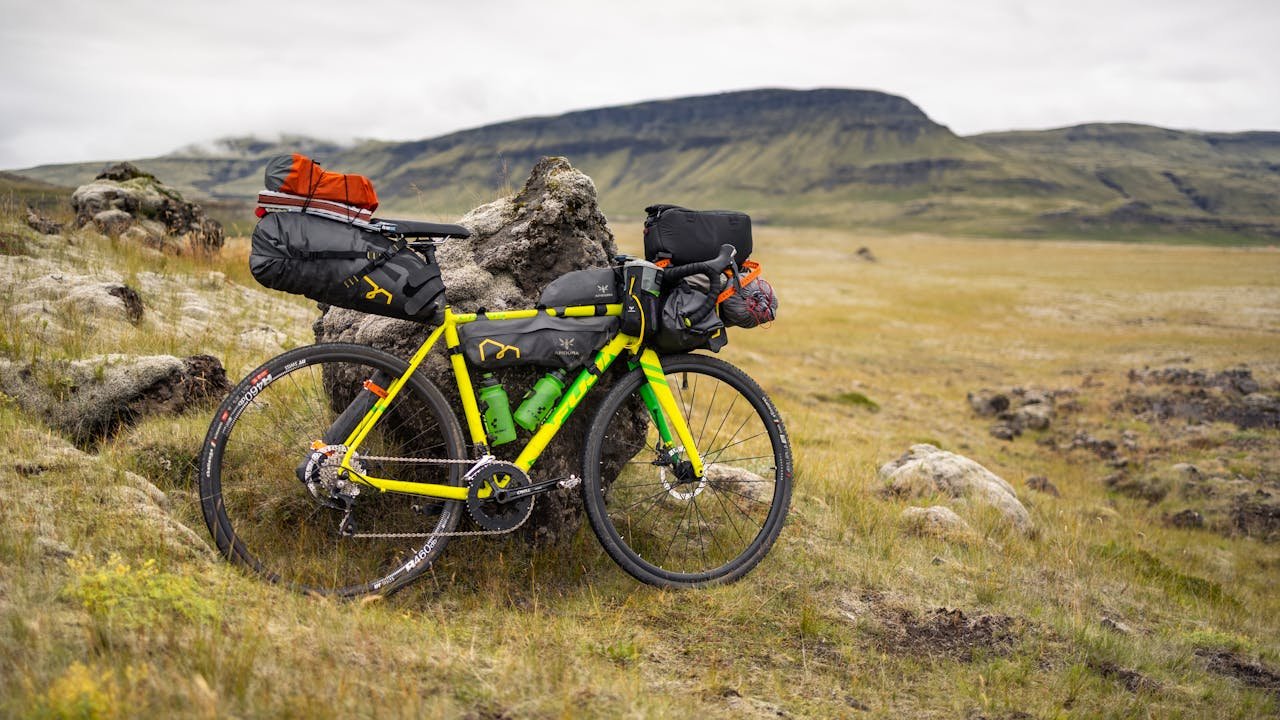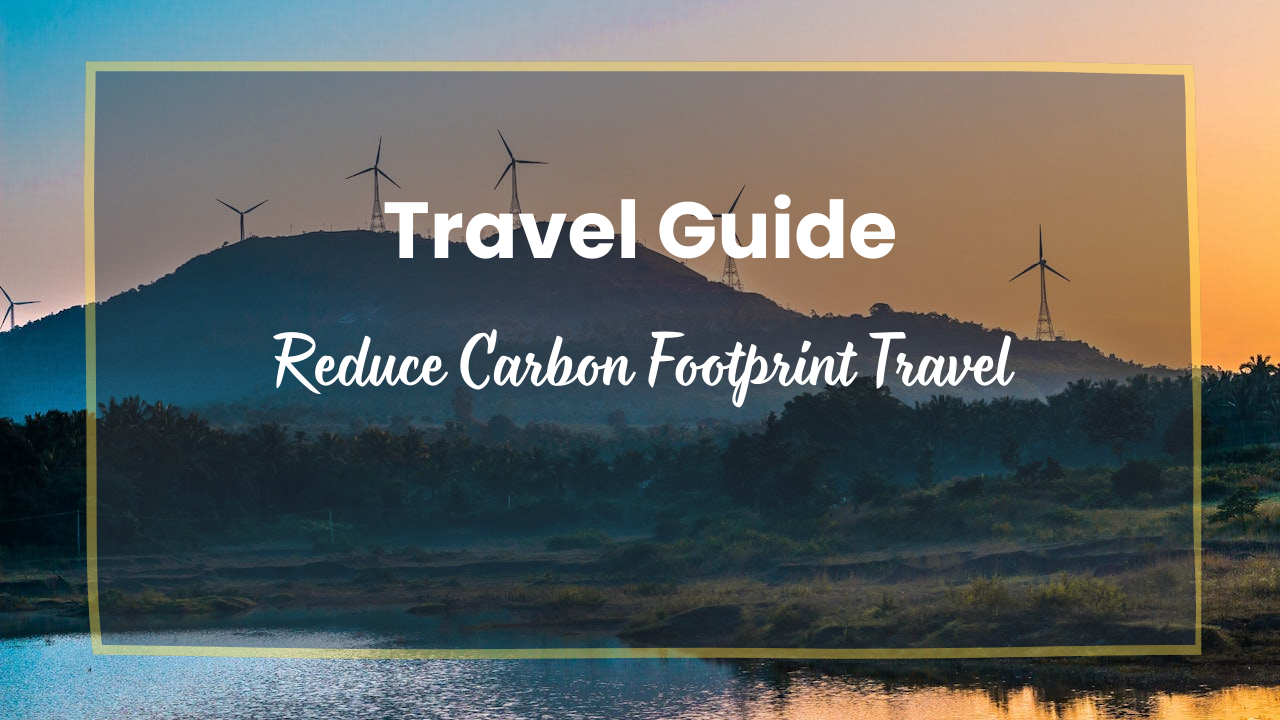Reduce Carbon Footprint Travel with Smart and Sustainable Tips
 Want to reduce your carbon footprint while traveling without sacrificing your love for adventure? You are not alone. As we become more aware of the impact of our actions on the environment, it’s becoming increasingly obvious that our travel habits need to change. This guide offers practical and straightforward tips to help reduce emissions while having a meaningful, memorable adventure.
Want to reduce your carbon footprint while traveling without sacrificing your love for adventure? You are not alone. As we become more aware of the impact of our actions on the environment, it’s becoming increasingly obvious that our travel habits need to change. This guide offers practical and straightforward tips to help reduce emissions while having a meaningful, memorable adventure.
These strategies can help you travel more efficiently and sustainably, whether flying abroad or taking a local road trip.
Why It’s Important to Reduce Carbon Footprint Travel?
Tourism accounts for roughly 8% of global carbon emissions, with transportation, especially air travel, being the largest contributor. Other aspects of travel, such as hotel stays, eating habits and souvenir purchases, also contribute to hidden carbon emissions.
You can reduce your carbon footprint by learning how to:
- Lower your personal greenhouse gas emissions
- Support sustainable economies
- Protecting natural ecosystems
- Influence the travel sector to adopt more eco-conscious practices
Quick Facts: Travel and Carbon Emissions
| Activity | Estimated CO2 Emissions |
| Transatlantic flights are available for one round-trip. | 1,6 metric tons |
| Driving 100 Miles (gas Vehicle) | 0.04 metric tons |
| A night at a luxury hotel | CO2 70-100 kg |
| Average global emissions per person/year | 4,5 metric tons |
Choose Sustainable Transportation

1. Fly Less and Smarter
You can make the most of your air travel, even if it’s inevitable.
- Book direct flights to avoid the CO2 emissions of takeoffs and landings.
- Fly Economy: More passengers = Lower emissions per person
- Carbon offset your flight. Use platforms such as Gold Standard and Cool Effect that support verified carbon offsetting projects.
2. Embrace Trains and Buses
- Trains emit 90% less CO2 compared to planes.
- High-speed rail in Europe and some parts of Asia is often cheaper and faster than flying.
- Local buses and shared vans reduce emissions per person and provide a more immersive travel experience.
3. Go Slow, Go Local
- Explore the region by electric scooter, bike, or on foot.
- Rent hybrid or electric vehicles instead of gasoline-powered ones.
- Support destinations that encourage low-carbon tourism zones.
Choose Eco-Friendly Accommodations

1. Book Carbon-Conscious Hotels
Look for certifications like:
- LEED
- EarthCheck
- Green Key
- GSTC Certified Properties
2. Stay in Homestays or Eco-Lodges
- Local materials are often used to reduce the carbon footprint.
- Solar power and composting systems are often relied upon.
- Support the local community directly with economic aid.
3. Minimize Hotel Waste
- You can skip changing your linens and towels every day.
- Bring your own bulk dispensers or mini toiletries instead.
- When not in use, turn off the lights, air conditioner, and electronic devices.
Eat Low-Carbon and Local
1. Eat Plant-Based or Flexitarian
- Livestock farming emits the most methane.
- Support restaurants that offer seasonal plant-based meals or try vegetarian food.
2. Buy Local and Organic
- Transport emissions from imported foods are significant.
- Eat at restaurants or farmers markets that use local ingredients.
3. Avoid Food Waste
- Ask for smaller portions or to share.
- When allowed, bring reusable containers to store leftovers.
Pack and Travel Light

Each pound of luggage on a vehicle or plane increases fuel consumption. Pack lighter to reduce your carbon footprint.
- Select multi-purpose clothing layers.
- Avoid using heavy packaging.
- Bring your own:
- Reusable water bottles
- Metal straw
- Cutlery and Tote Bags
- Solar chargers
Be Mindful of Souvenirs
- Avoid buying products that contain endangered materials such as coral, shells and ivory.
- Locally handcrafted products made sustainably are best.
- Avoid buying items that have to be imported or flown in from far away.
Support Destinations That Care About the Climate

1. Travel During Off-Peak Seasons
This will spread tourist income equally and reduce pressure on infrastructure.
2. Visit Places With Environmental Regulations
Find destinations with strong eco-friendly tourism policies and programs promoting community-based tourism.
- Bhutan (low-volume, high-value tourism)
- Slovenia (green cities and rural escapes).
- Costa Rica (more than 25% of protected areas)
3. Join Eco Tours or Conservation Projects
Take part in beach cleaning, tree planting, or wildlife monitoring activities.
What is Carbon Offsetting?

Carbon offsetting is the process of investing in environmentally friendly projects, such as reforestation and renewable energy, to offset emissions that one cannot avoid.
Pros:
- Supports environmental innovation
- Raising awareness of emissions
- Easy access through third-party platforms or airlines
Cons:
- It doesn’t replace the need for emissions reduction
- Some offset programs have a greater impact than others.
Tip: Only use platforms that have been vetted, such as Gold Standard, CarbonFund.org, or MyClimate.org.
Resources for Greener Travel Planning
- Sustainable Travel International
- Global Sustainable Tourism Council (GSTC)
- EcoHotels.com
- B Corp Certified Travel Companies
Final Thought
Reduce your carbon footprint while you travel to match your values. It’s not necessary to be perfect, just be aware. You can make small changes to your lifestyle, such as how you eat, move, spend, and stay.
FAQs
How can we reduce our transport carbon footprint?
Reduce emissions by avoiding single-occupancy vehicles. This can be done through carpooling or riding public transportation, as well as walking, cycling, or taking the bus to work and running errands.
What is the carbon footprint of travel?
The carbon footprint of travel is usually measured in grams of carbon dioxide equivalents per passenger kilometer. This includes the increased warming caused by aviation emissions at high altitude.
How to carbon offset travel?
By purchasing carbon credits, travelers can ‘offset’ the carbon emissions from their flights, land transportation, and other activities. One carbon offset credit equals one metric tonne of CO2e reduced or avoided from the atmosphere.
Is it possible to travel and still be sustainable?
Yes. Planning carefully allows you to enjoy a rich and rewarding travel experience while reducing your carbon footprint.
Can I travel guilt-free?
There is no such thing as zero-impact travel, but effort and awareness can make a huge difference. Choose progress over perfection and aim for low impact instead of zero impact.







